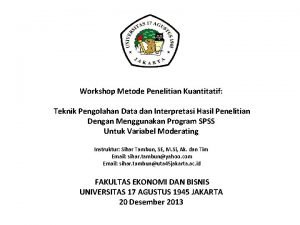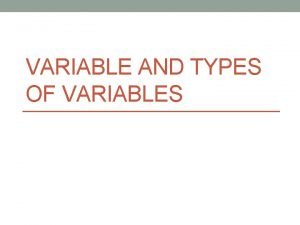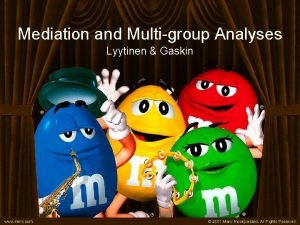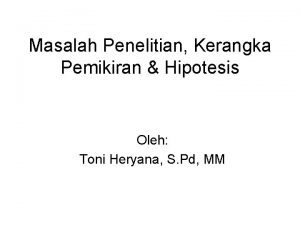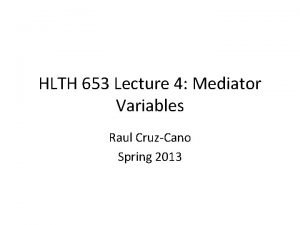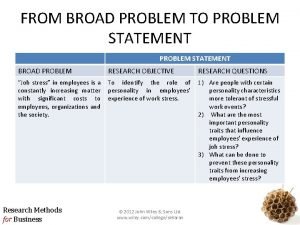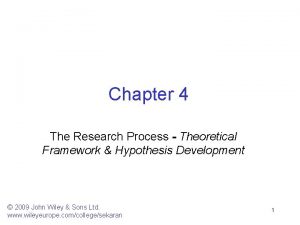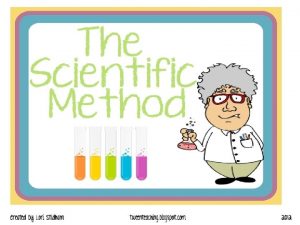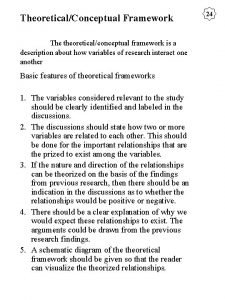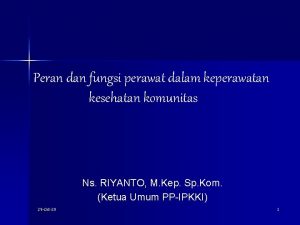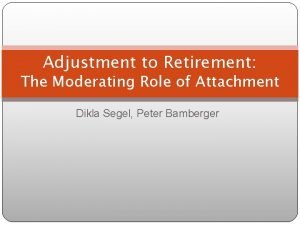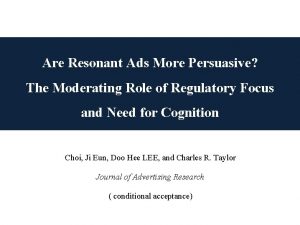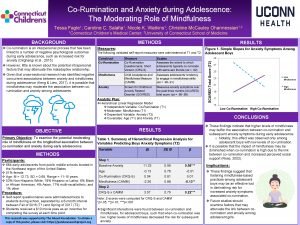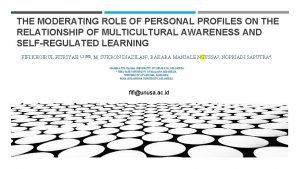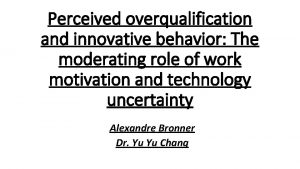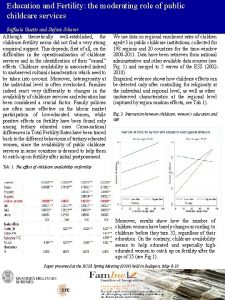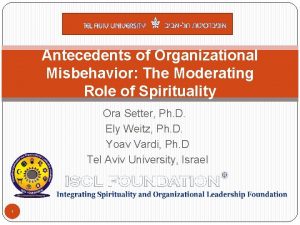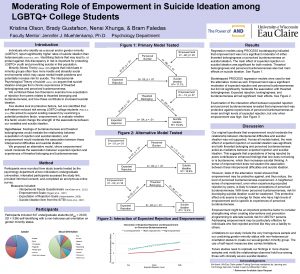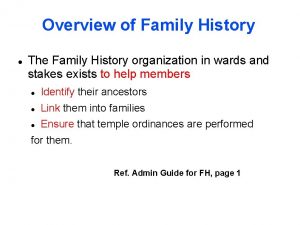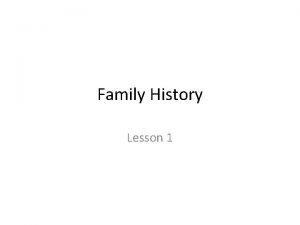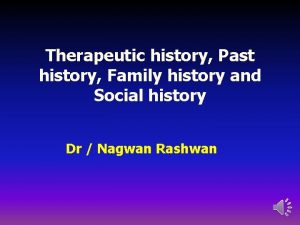The Moderating Role of Family History on the

















- Slides: 17

The Moderating Role of Family History on the Relationship between Substance-Free Rewards and Alcohol Problems Keanan J. Joyner, Samuel F. Acuff, Lidia Z. Meshesha, Christopher J. Patrick, James G. Murphy

Overview of Behavioral Economics • Focus on choice: behavior is allocated to an activity based on the cost/benefit ratio of that activity relative to other available activities • levels of drug use are sensitive to: • Drug price or availability • Presence of alternatives, reward delay • Strong preference for immediate relative to delayed reinforcers may be key feature of addiction • Addiction = drugs have greater reinforcing value than available alternatives Bickel, Johnson, Koffarnus, Mac. Killop, & Murphy (2014). Annual Review of Clinical Psychology. Hursh (1980). Journal of the Experimental Analysis of Behavior. Tucker & Vuchinich (1988). Journal of Abnormal Psychology.

Substance-Free Reinforcement and Alcohol Problems • In the DSM-5: o “A great deal of time is spent in activities necessary to obtain alcohol/drug or recover from its effects” o “Important social, occupational, or recreational activities are given up because of alcohol/drug use. ” • Substance-free alternatives aren’t actually measured in diagnostic criteria despite being implied as an important feature of addiction

Animal studies • We administer lots of drugs to rats, then they start to selfadminister drugs, and they become addicted • But one research group noticed that this animal model doesn’t really fit how humans work – there always alternatives to drug use for humans o We tend to not give these to rats

Rat Park studies Alexander et al. , 1978; 1981 o Rat Park: Full of alternative rewards • Exercise wheels, other rats, tunnels, etc. Skinner Box versus Rat Park • Almost impossible to get Rat Park rats to self-administer to addiction o Follow-up studies show higher environmental enrichment leads to lowered addictive potential (Ahmed et al. , 2005)

Humans drug use and alternative sources of reward • Drinking decreases as a function of increasing offers of alternative rewards (Vuchinich & Tucker, 1988) • Offers of alternative rewards even suppress human “hard” drug use (Hart et al. , 2000) • Difficulty accessing sources of natural reward is associated with more severe AUD in college students (Joyner et al. , 2016)

Implications of Family History • FH+ is associated with more positive alcohol expectancies (Pastor & Evans, 2003; La. Brie et al. , 2010) • Conditioned neural reward responses to alcohol higher in FH+ (Oberlin et al. , 2013) • Visual cues for alcohol elicit greater neural response (Dager et al. , 2013) • Substance-free alternatives particularly important for FH+?

Current study • Main Hypotheses: o 1) Less Substance-free Reinforcement is associated with more alcohol problems o 2) FH+ status is associated with more alcohol problems o 3) The effect of alternative reinforcers is most pronounced in FH+ individuals • 393 heavy drinking young adults (2+ HDEs past month), 331 included in final sample o Mean age = 18. 8, SD = 1. 1 o 60. 8% women o 78. 9% white, 8. 7% black, 7. 1% multiracial

Substance-free Reinforcement • Measured via the LAEQ (Leisure Activities in the Evening Questionnaire) o Most of young adult drinking happens in the evenings – thus, having substance-free alternatives is specifically important o Reinforcement survey schedule scoring (frequency x enjoyment) o Internal consistency is good (α =. 85; GLB =. 90)


Other Measures • Typical alcohol use (Daily Drinking Questionnaire) Collins et al. (1985) • Alcohol-related negative consequences (Young Adult Alcohol Consequences Questionnaire; α =. 89, GLB =. 94) Read et al. (2006) • Assessment of biological parents’ alcohol abuse o Counted as FH+ if at least one parent had alcohol problems o Only counted as FH- if both parents definitively did not have alcohol problems • People were dropped from analyses if: o They answered ‘maybe’ to one parent while answering no to the other o They did not know one or both of their biological parents o Final sample: N = 331

Results • Hypothesis 1: Less Evening Substance-free Reinforcement is associated with more alcohol problems • LAEQ significantly correlates with typical alcohol use (r =. 19, p =. 001) and alcohol problems (r = -. 13, p =. 020) o If you split up the reinforcement metric between enjoyment and frequency, Steiger-Z tests indicates no difference in predictive power for either typical alcohol use (Z =. 93, p =. 350) or alcohol problems (Z = -1. 12, p =. 262)

Results • Hypothesis 2: FH+ status is associated with more alcohol problems 16 14. 362 14 *** 11. 955 YAACQ Total 12 10 8 6 4 2 0 FH+ FH- o Not associated with evening substance-free reinforcement levels (in this sample) o Not associated with typical drinking level (in this sample)

Results 10 • Hypothesis 3: This effect is most pronounced in FH+ individuals 9 8 Alcohol Problems • FH- : substance-free reinforcement did not predict alcohol problems (β =. 04, p =. 54) • FH+ : substance-free reinforcement negatively related to alcohol problems (β = -. 19, p =. 015) FH+ FH- 7 6 5 4 3 2 1 0 Low Substance-Free Reinforcement High Substance-Free Reinforcement

Discussion • Sources of alternative reward in one’s environment alters susceptibility to addiction in both rats and humans • Current results suggest that these alternatives appear to be most protective for those at risk of developing alcohol problems in the first place (FH+ individuals) • Is this interaction possibly unique to the phenomenon of college student drinking?

Discussion • Future research should use continuous measures of liability factors conferred by family history High Disinhibition Low Disinhibition 0. 18 0. 16 0. 14 SUD Composite o Joyner et al. (under review) showed that people high in disinhibition (main liability conferred by a family history of alcohol problems) and simultaneously low in EEG-assessed reward sensitivity showed the most severe substance use problems 0. 2 0. 1 0. 08 0. 06 • Possible treatment implications? o Personalized treatment protocols 0. 04 0. 02 0 Low Reward Positivity High Reward Positivity

Conclusion • Individuals at risk for substance problems to begin with show particular vulnerability to substance abuse when they either don’t have, or aren’t sensitive to, substancefree (natural) rewards
 Perbedaan moderating dan intervening
Perbedaan moderating dan intervening Intervenierende variable
Intervenierende variable Perbedaan moderating dan intervening
Perbedaan moderating dan intervening Moderator examples
Moderator examples Contoh kerangka berpikir penelitian kuantitatif
Contoh kerangka berpikir penelitian kuantitatif Moderation vs mediation
Moderation vs mediation Research problem statement examples
Research problem statement examples Give the hypotheses for the following framework
Give the hypotheses for the following framework Perbedaan moderating dan intervening
Perbedaan moderating dan intervening Conceptual framework schematic diagram
Conceptual framework schematic diagram What is web role and worker role in azure
What is web role and worker role in azure Krappmann symbolischer interaktionismus
Krappmann symbolischer interaktionismus Statuses and their related roles determine the structure
Statuses and their related roles determine the structure Family planning objectives
Family planning objectives Fungsi keperawatan komunitas
Fungsi keperawatan komunitas Difference between nuclear family and joint family
Difference between nuclear family and joint family Periodic table staircase
Periodic table staircase Binuclear family vs blended family
Binuclear family vs blended family
